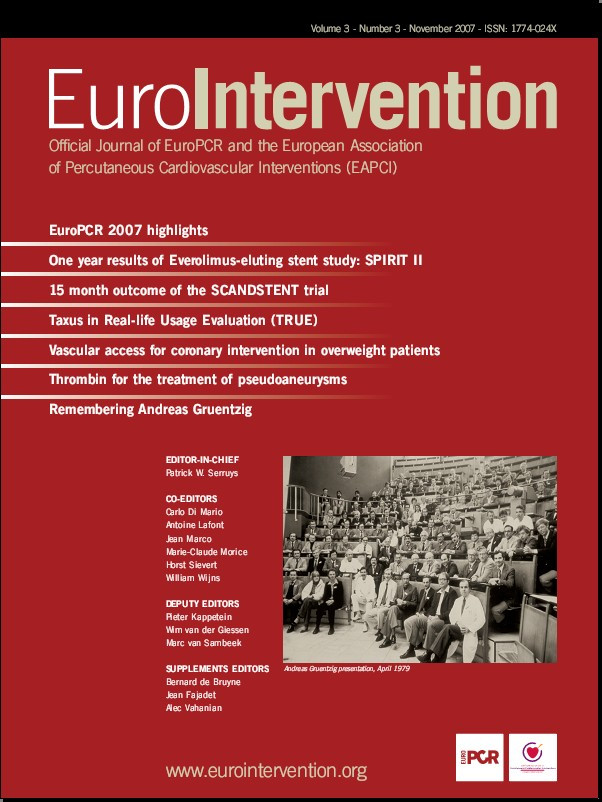September 16, 2007 ~ Dolf Bachmann is driving me from the Baur au Lac hotel to the University Hospital in Zurich. I didn’t realise that he could speak English but apparently he is learning. “It was now, about 8 o’clock, that Dr. Gruentzig did it.”
The first patient who had coronary angioplasty was reminiscing about his own procedure performed 30 years before. He looks fit and healthy. The occasion was the celebration of the signal event that ushered in the field of interventional cardiology. Many of those who learned the technique from Andreas Gruentzig gathered in the same auditorium where he presented some of the first live cases. Although physically absent, Andreas’ “presence” was palpable. Everyone understood that he not only founded the field of interventional cardiology, but by doing so, he had a profound influence on cardiovascular medicine.
His professional life was as balanced as the “three-legged stool” between teaching, research, and patient care. Dissemination of the technique in a careful but generous way was achieved in the courses in Zurich, and then after 1980, in Atlanta. Hundreds learned not only his technical approach but important aspects of proper selection and patient and family interaction. When he joined our laboratory at Emory, we were able to expand those courses, and with the large volume of cases, could make important clinical observations and perform pivotal clinical trials. Fellows competed for clinical and research positions and many of those continue to lead the field today. His care for patients was exquisite and patient safety and outcomes were his major concern.
Space does not permit an exploration of all the important advances that occurred in those brief five years that he was with us. However, a few of them should be mentioned: collaboration of the National Heart Lung and Blood Institute (NHLBI) in the establishment of the multicentre registry, multiple research studies to identify risks for success and complications of PTCA and for restenosis following PTCA, and his powerful influence on industry in influencing companies to develop steerable guidewires which were first demonstrated at the Emory course in 1982, and low profile balloon material which required all of his persuasive abilities. Andreas conceived a trial of PTCA compared to CABG in 1984, and these concepts were incorporated into the EAST Trial supported by the NHLBI and begun finally in 1987.
His influence on medicine continues 22 years after he left us. Performance of coronary procedures has become reliable and over 5,000 US cardiologists have successfully completed the American Board of Internal Medicine examination and become certified as competent in interventional cardiology. Dilatation of peripheral vascular obstructions has evolved from Gruentzig’s work in the early- and mid-1970s to create a major revolution in management of aorto-iliac and lower extremity disease and a likely solution for most carotid artery disease. The ability to work with minimally invasive techniques has enabled repair of ASDs, mitral valves, replacement of aortic valves, ablation of septal tissue in hypertrophic cardiomyopathy, and experimental insertion of proteins and genes into the myocardium to induce angiogenesis and myogenesis. PCI has created new conditions related to vascular damage and healing that has driven research in vascular biology for over two decades.
On September 28, 2007, the ACC and the SCA&I celebrated these contributions of interventional cardiovascular medicine by establishing an enduring memorial to the one who started it all ~ Andreas Roland Gruentzig, the Father of Interventional Cardiovascular Medicine.
Dolf Bachmann and millions of others are grateful.

